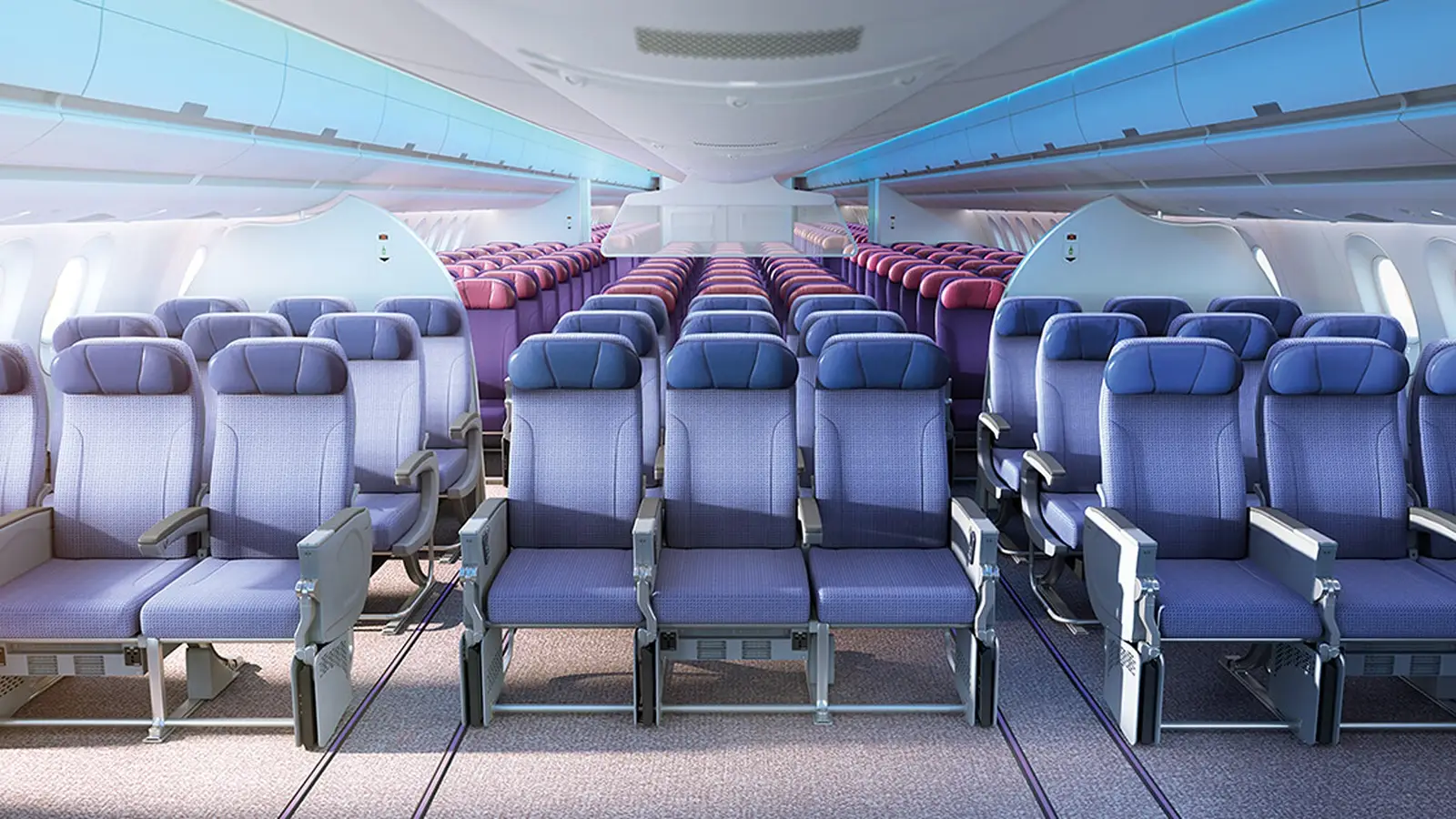
The seat that you choose can make or break your flight, regardless of the airline you fly with or the class of seat you select. Everyone has their preferences for what they prioritize during seat selection, and there are plenty of myths about supposedly “good” seats and configurations that deserve a challenge.
This article breaks down the most notorious layouts that create problematic seats. Make sure you are aware of them so you don’t mistakenly select the wrong seat for your needs.
5 The A220: 2-3
Frequent fliers dread this aisle seat.
The Airbus A220is a popular jet among both airlines and passengers because of its quiet and comfortable cabin as well as its next-generation efficiency. It offers an alternative future for single-aisle jets, while aircraft like the 737 MAX are racing to increase capacity as much as possible. One quirk of the A220 is the transition from a 2-2 layout for the business class cabin to a 2-3 layout for the economy cabin utilized by most airlines operating the jet. The result is that the positioning of the aisle shifts at the front row of economy class. As a result, one of the aisle seats is effectively in the aisle itself. This means extra legroom, but no under-seat storage and frequent disruptions as cabin crew walk past, nudging you or tripping over your feet. Moreover, the inflight entertainment screen and tray table will be within the immovable armrest, making the seat marginally narrower and without flexibility in armrest position.Not all airlines have this issue. The table below details the airlines you should be concerned about and the seat numbers to avoid. It should also be noted that Air Canada seat 12D has the issue. However, there is a separate small bulkhead between the economy front row and business with an inflight entertainment screen installed. This goes some way to mitigating the problem.
Several airlines that fly A220s don’t have this issue, as noted by Simple Flying’s Emma Lewis. Select the aisle seat on these carriers without fearing the dreaded front economy class seat. They are: Air Baltic, Air France, Croatia Airlines, Smartwings, ITA Airways, JetBlue, Korean Air, and Swiss.
4 Business Class: 1-1-1
This configuration could mean smelling your fellow passengers’ feet.
A post on the aviation forum Infinite Flight, coincidentally made by a user called Louis, alerted me to the issues with the 1-1-1 business-class configuration, specifically on Air New Zealand. A 1-1-1 layout should be an advantage, as fewer seats are being crammed in compared with the common 1-2-1 layout used by many airlines. As a result, passengers can enjoy a more spacious experience. Furthermore, everyone has easy access to the aisle, meaning there is no need to cause a disturbance when you need the toilet.
“Where ‘window seat’ means looking at other people’s feet,” Louis said, referring to how this configuration can result in there being no actual window seats where it is easy to look outside without getting a crick in your neck. This is because all the seats face away from the window.
The divider placed between the left seat and the central seat also means that the seats on the left are substantially more pleasant. Those on the left get much more privacy, while those in the center and right are looking at each other, and smelling their feet if the individual opposite you is discourteous enough to remove their shoes.
3 Business Class For Families
Premium traveling is often not right for those who need to fly together.
Most business class layouts aren’t conducive to those who need to sit together, like families. In economy, it is possible to book an entire row, so even large families can sit together, but most business class cabins prioritize privacy. There are rarely more than two adjacent seats. Larger groups should consider alternative options, such as private alternatives to commercial flying.
Privacy dividers also isolate parents from their children. Forced to sit in multiple rows, it is stressful and challenging for parents to pay attention to their children.
Alongside the obvious issues with business class and first class for families, you also risk attracting the ire of fellow passengers. Patrick Smith’s Ask The Pilot explores this question in his article “Should kids be banned from first and business class?” Energetic, noisy, and misbehaving children can break the atmosphere that premium travelers are paying for aboard aircraft and in lounges. Breaches in business-class cabin etiquette create an uncomfortable atmosphere for everyone. He writes: “These tickets cost thousands of dollars, yet it seems there’s no shortage of travelers well-heeled enough to be jetting around in the forward rows with two, three, even a half-dozen small children.”
2 The Exit Row
The holy grail for economy class travelers may not be all it’s cracked up to be.
The exit row is often immensely popular for economy class travelers. It allows you to enjoy the extra legroom of premium economy, often without incurring additional costs. Yet, this isn’t always an advantage. The exit row may actually offer less space. For example, if the seat next to you is open, you could normally put the armrest up and stretch into the room next to you. However, armrests are often fixed in the exit row, limiting you to the width available within your seat.
Depending on the aircraft you are flying on, the exit row can also cause logistical difficulties. For instance, aboard the 757-300, the exit row seats can be as far back as row 41 ( Delta Air Lines) and row 33 (United). As a result, it might take an extra ten minutes to leave the aircraft than if you had a further forward seat, meaning that a tight layover can become challenging or impossible.
Some passengers will also take issue with the view if they prefer the window seat. The exit row is often over the wing, so you won’t have as much to see. It should be noted that this issue affects not only the exit row but also many other seats. Therefore, be sure to carefully study the seat map when selecting your seat to ensure you can enjoy the view during your flight.
Finally, the exit row is limited to passengers who are able-bodied enough to operate the emergency exits. Moreover, you usually won’t be able to use the exit row if you are traveling with a pet. As a result, even those who would prefer the perks of the exit row to the downsides won’t always be able to make use of it.
1 Virgin Atlantic’ 787-9 Dreamliner Upper-Class
The herringbone configuration has caused issues for some premium travelers.
Traditionally, business class seats are arranged in a herringbone or staggered configuration, which refers to how they tessellate with the surrounding seats to maximize the number of seats that can fit into the limited available onboard space. The herringbone arrangement was first introduced into business class cabins that use flatbeds, notably when British Airways introduced fully flat beds in its 747 first class in the 1990s. This was later matched by Virgin Atlantic for its first in-house developed Upper Class Suite in the early 2000s. In this pattern, the beds are angled away from or towards the aisles.
Virgin Atlantic has continued this pattern with its 787 Upper Class Suite. In its trip review, Head For Points eloquently summarized the associated issues: “You have to really strain your neck to see out the window and end up with little to no privacy as you gaze lovingly into the eyes of whoever is sitting opposite you.” However, the herringbone layout’s disadvantage becomes a perk for couples and families. It allows for “honeymoon” seats so that those traveling together can sit together.
These issues are ones to pay close attention to. The high prevalence of Virgin Atlantic’s 787s means that you may be flying on one soon. The table below uses Cirium data to break down the top six busiest Boeing 787 routes from London-Heathrow in March 2025:



